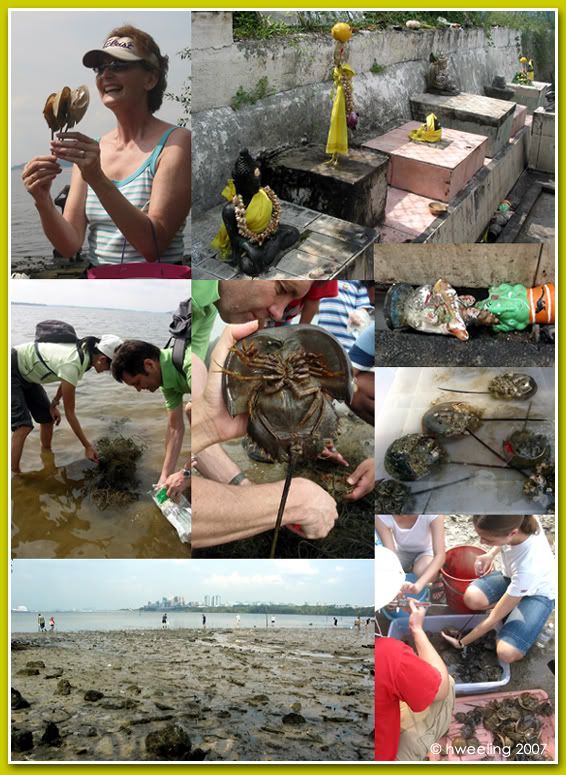Joined super enthusiastic Nature Society members and NIE students at Mandai mudflats (off Kranji) yesterday afternoon (see event) to "rescue horseshoe crabs trapped in discarded nets" and to bring in horseshoe crabs for further study. Managed to find quite a lot of them, some really tiny (less than 2cm wide) and some big spiny ones (almost 20cm wide).. many were embedded in the calf-deep mangrove mud and i sustained multiple shallow cuts on my fingers digging them out :(
The area we were searching was right next to an interesting hindu shrine.. and before we went for our search, we were given a briefing by this lady (Lesley Cartwright-Taylor - shown in the pic below holding the molted shells of horseshoe crabs) who appeared to know quite a bit about them.

Some interesting things i learnt about horseshoe crabs:
- they are not really crabs but more closely related to spiders, ticks, and scorpions
- they have been around for over the last 350 to 400 million years, and have been described as "living fossils" and "remnants of the age of dinosaurs"
- despite their intimidating appearance, horseshoe crabs are not dangerous
- a horseshoe crab's tail, while menacing, is not a weapon. Instead, the tail is used to plow the crab through the sand and muck, to act as a rudder, and to right the crab when it accidentally tips over
- the medical profession uses an extract from the horseshoe crab's blue, copper-based blood to test the purity of medicines and to detect any bacterial contamination as it clots when it comes into contact with bacteria (pretty cool, huh?)
- and for that ever popular Singaporean/Chinese question on everything and anything that moves... i.e. "can it be eaten?"... check this out ... nonetheless, i am aware that they are a protected species..

No comments:
Post a Comment